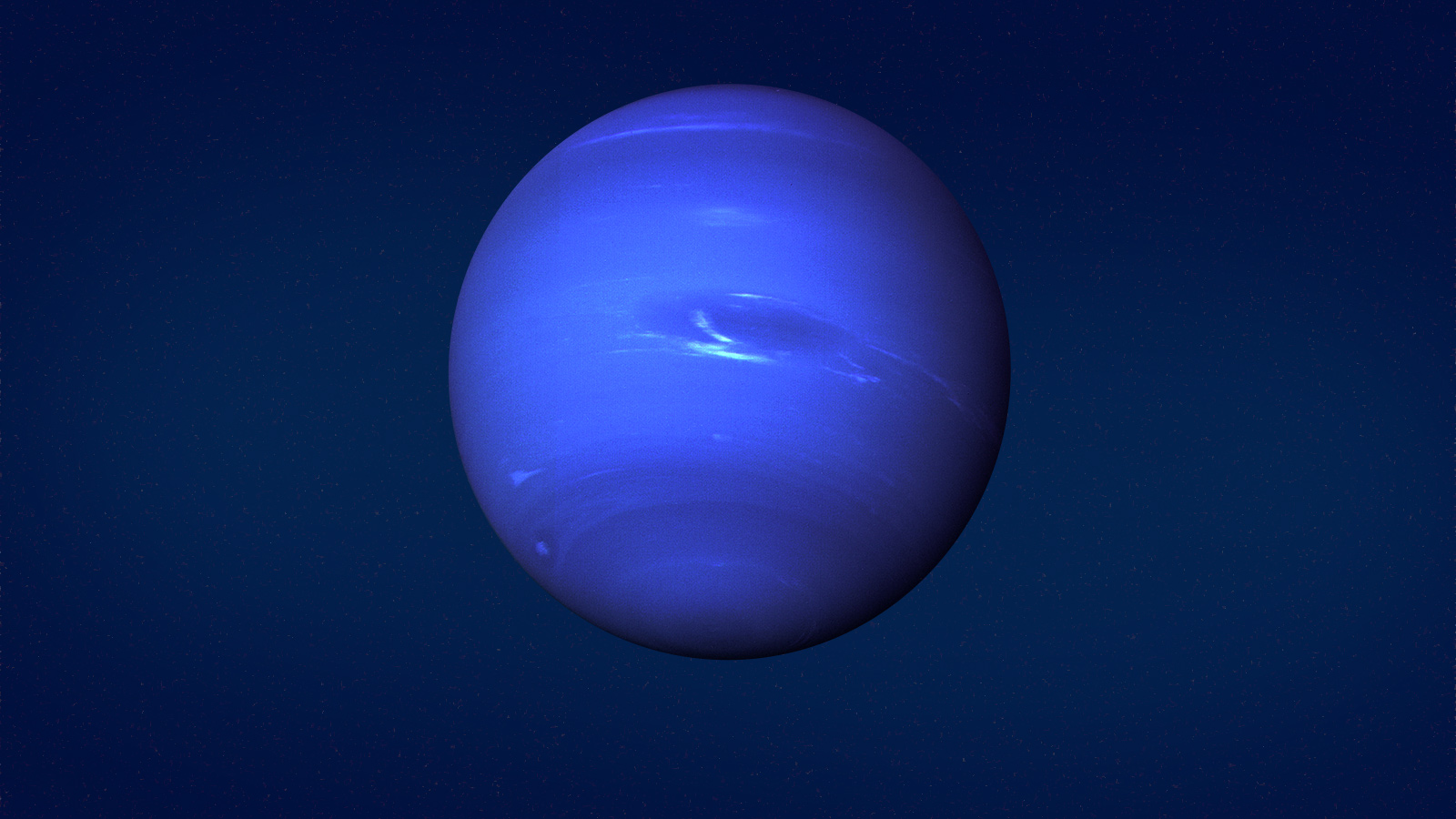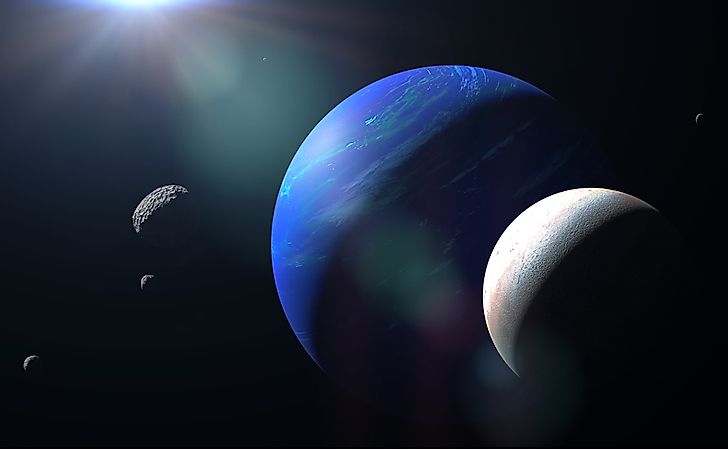Neptune is our solar system’s eighth planet from the Sun. According to NASA, this blue gas giant is 17 times heavier than Earth and has over 58 times the volume of Earth.
In this article, we will look at some interesting facts about this planet along with the controversy surrounding it.
Neptune, the Other Blue Planet of Our Solar System
Looking at the image of our solar system, one can spot the Sun in the centre and eight planets revolving around it. The planet revolving in the farthest orbit is Neptune, discovered 175 years ago on September 23-24, 1846.
Also referred to as the twin of Uranus because of its resemblance in terms of its bright blue colour, Neptune stands at a distance of 4.495 billion km from the Sun, has a surface area of 7.618 billion km² and has an apparent magnitude is around 7.67 to 8.00. Furthermore, being the farthest planet from the Sun, it has a huge orbit and an orbital period of 165 years.

To add more to your knowledge of Neptune, take a look at this video.
Some Interesting Facts About the Planet
Mentioned below are some important facts about the blue planet.

Atmospheric Conditions of Neptune:
Neptune has a dense atmosphere composed primarily of hydrogen as well as other gases like helium and methane. Methane absorbs the majority of the red light emitted by the Sun. This phenomenon is responsible for Neptune’s well-known blue hue. In addition, as the planet Neptune is so distant from the Sun, its temperature is incredibly low, generally around -373 degrees F, thus, making this planet brutally frigid.
The Various Moons of Neptune
Neptune has 14 moons, each named after a minor sea deity or a nymph from Greek mythology. By far, the largest is Triton, whose discovery on October 10, 1846, was made possible by beer – amateur astronomer William Lassell.
Neptune’s only spherical moon is Triton. The planet’s remaining 13 moons are irregular in form. Triton is also the only big moon in the solar system to orbit its planet in the opposite direction of its planet’s rotation. This anomaly shows that Triton was originally a dwarf planet that Neptune grabbed rather than developing in place.
Neptune’s Five Rings
The primary rings of Neptune are known as Leverrier, Galle, Arago, Lassell, and Adams. Neptune’s ring system also contains unusual groupings of material known as arcs. In the outermost ring, Adams, there are four main arcs named Egalité (Equality), Liberté (Liberty), Fraternité (Fraternity), and Courage. The arcs are peculiar since the rules of motion would suggest that they would spread out evenly rather than remain clumped together. Scientists currently believe that the gravitational forces of Galatea, a moon just inside the ring, help maintain these arcs.
The Planet’s Magnetosphere
When compared to the planet’s rotation axis, the primary axis of Neptune’s magnetic field tilts over by around 47 degrees. Because of this misalignment, Neptune’s magnetosphere experiences extreme changes throughout each spin, similar to Uranus, whose magnetic axis is inclined around 60 degrees from the axis of rotation.

Some facts about Neptune which make it unique and different from other planets:
- Neptune is the smallest of all the gas giants. The other three are Jupiter, Saturn and Uranus.
- It is the only planet that you can not see with naked eyes from the earth.
- The length of a day there is 16 hours and one year is equal to 165 earth years. Therefore, not even a single year has passed there since 1846.
- Neptune’s magnetic field is 27 times stronger than the Earth’s.
- Winds on this planet are extremely strong and dangerous. In fact, a hurricane on the planet Neptune can go up to the speed of 2100 km per hour. Scientists are perplexed as to how an incredibly cold planet like Neptune can cause its cloud tops to shift so quickly. One theory is that the freezing temperatures and fluid gas movement in the planet’s atmosphere minimise friction to the point where it’s simple to create such fast winds.
- The only spacecraft to have visited Neptune was NASA’s Voyager 2, which did so during its Grand Tour of the Solar System. On August 25, 1989, Voyager 2 flew by Neptune, passing within 3,000 kilometres of the planet’s north pole.
Why is The Discovery of Neptune Still Considered a Controversy
Discovered in 1846, the three main astronomers behind its discovery were Urbain Le Verrier, Johann Gottfried Galle, and John Couch Adams. Their aim was to look for movements beyond Uranus and one night, they finally succeeded in finding a planet further away from it. They found its position only due to observed perturbations in the orbit of the planet Uranus. Furthermore, it is believed that it was first seen by Galileo, but he mentioned it as a star so the credit for its discovery can not be given to him.
The controversy behind the discovery of Neptune arose because some consider that its discovery was done by mathematical calculations while some think that it was randomly seen in the sky. This confusion has made it difficult for people to decide who gets the credit for the planet’s discovery.
The video mentioned below will show you the first real images of the blue planet that were released around the time of its discovery.
Final Thoughts on the Farthest Planet in the Solar System, Neptune
There isn’t a lot of information available on this blue planet as scientists are unable to look at it through a telescope or send a spacecraft to study the planet. In fact, even the most technologically advanced telescope, the Hubble, can only catch glimpses of the planet from time to time. However, with recent technological advancements, man hopes to someday send an unmanned spacecraft to thoroughly examine this unknown planet.
To read more about such interesting facts and topics, head to Podium Blog now.

